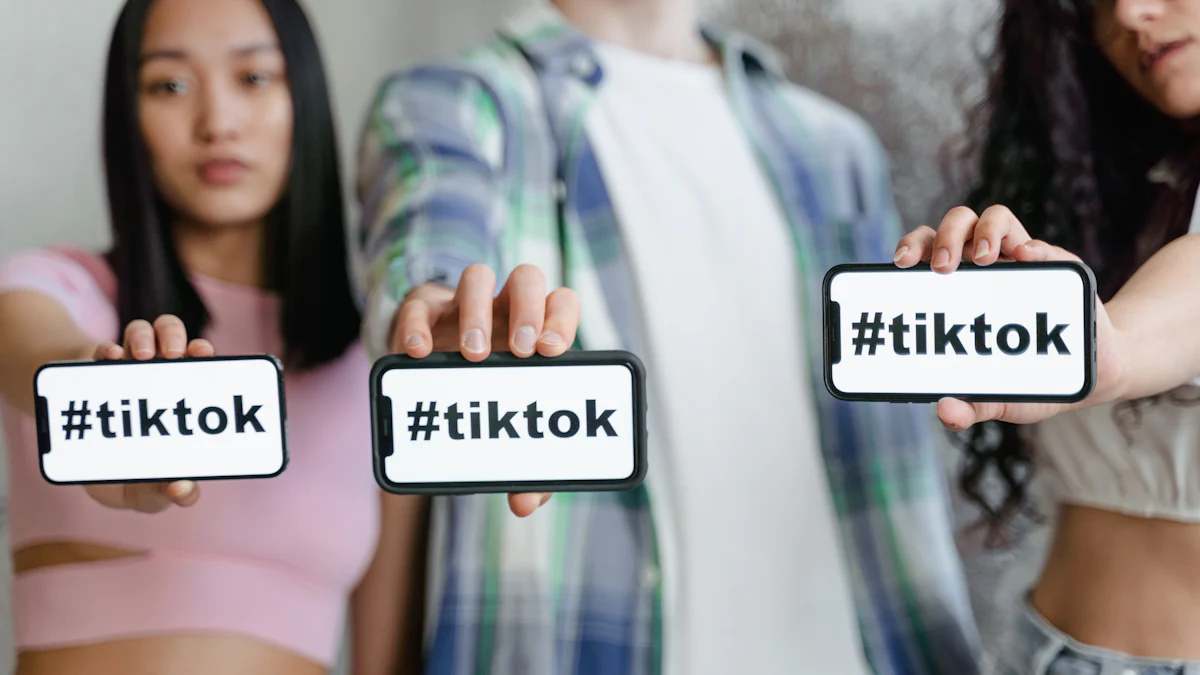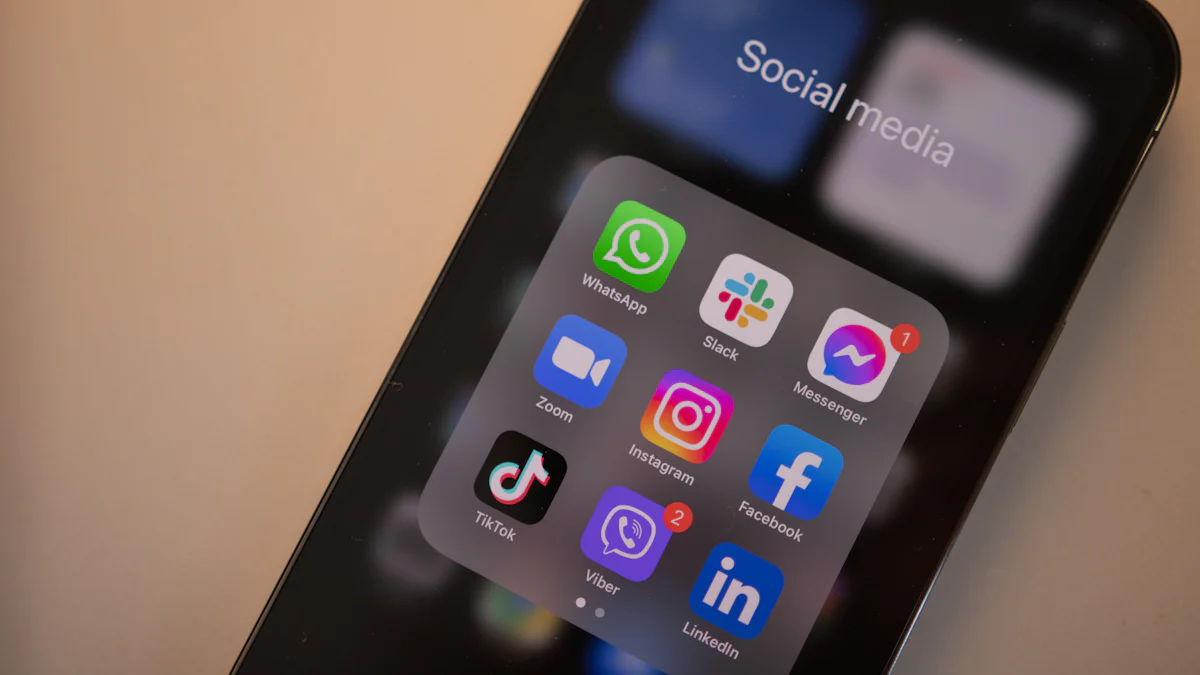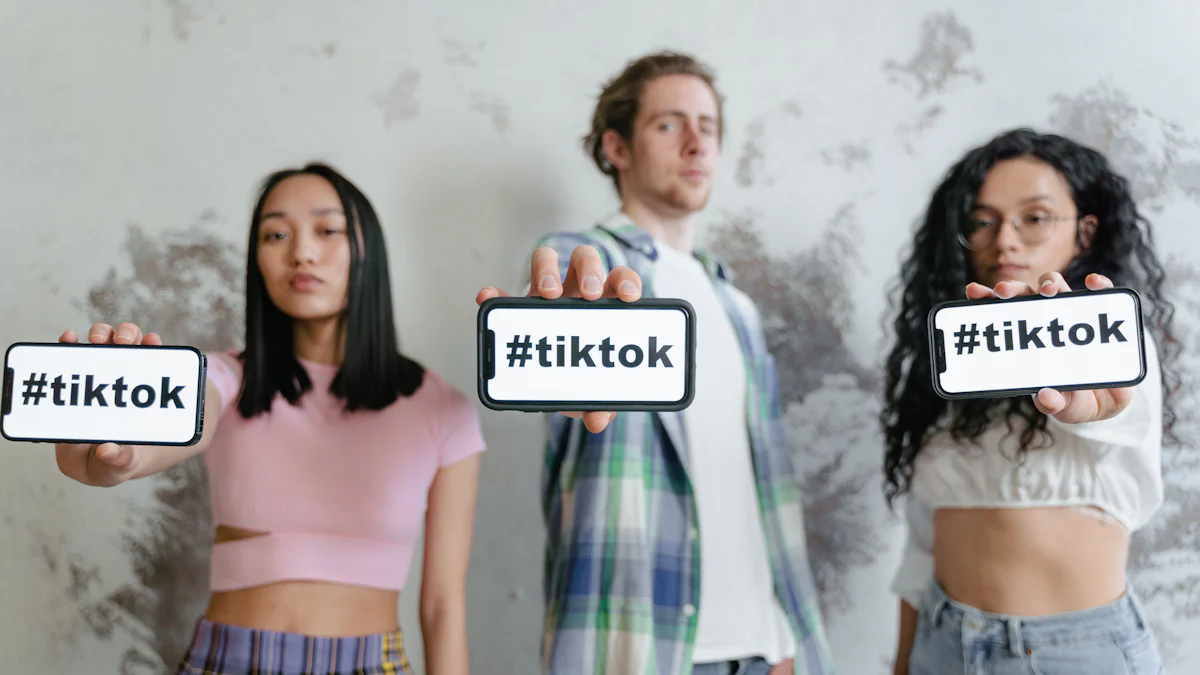TikTok Influencers on OnlyFans versus Other Platforms in 2025

TikTok influencers with OnlyFans are changing the way you experience social media. These influencers don’t just create content; they build communities and offer exclusive experiences. For example, Diana Maux shifted from TikTok fitness videos to personalized wellness offerings on OnlyFans, while Riley Reid uses both platforms to maintain a consistent brand. You’ve probably noticed how creators now use live streaming and direct messaging to connect with their audiences. This shift shows how influencers are redefining engagement and monetization. By blending TikTok’s viral trends with OnlyFans’ exclusivity, they’re reshaping the social media landscape.
TikTok Influencers with OnlyFans: A Multi-Platform Presence

TikTok as a Launchpad
TikTok has become the go-to platform for creators to kickstart their careers. Its short, engaging videos make it easy for you to discover new trends and personalities. For influencers, TikTok offers a unique chance to go viral quickly. A single video can catapult someone into the spotlight overnight. This is why many creators use TikTok as their launchpad. It’s the perfect place to build an audience and test what kind of content resonates with viewers. Once they’ve gained traction, they often look for ways to expand their reach and monetize their growing fanbase.
Why Influencers Expand to OnlyFans
You might wonder why TikTok influencers move to OnlyFans. The answer lies in exclusivity and deeper connections. Creators like Bella and Diana Maux have used their TikTok fame to introduce followers to OnlyFans. Bella shares behind-the-scenes content, while Diana focuses on fitness and wellness. Cami Chan, known for her cosplay, offers detailed and exclusive content to her dedicated fans. Riley Reid, on the other hand, uses OnlyFans to create a more private relationship with her audience. This shift isn’t just about selling content. It’s about offering unique experiences that make fans feel special. For influencers, OnlyFans provides a way to build a loyal community while earning through subscriptions and tips.
Other Platforms Influencers Use
TikTok influencers don’t stop at OnlyFans. They often branch out to platforms like Instagram and YouTube. Instagram is a favorite for influencer marketing, with 79% of brands considering it essential. It’s great for sharing polished photos and engaging with followers through Stories. YouTube, on the other hand, allows creators to post long-form videos, perfect for tutorials or vlogs. Tools like Upfluence and Aspire help influencers manage campaigns across these platforms. By diversifying, creators can reach broader audiences and maximize their income streams.
Content Differences Across Platforms
TikTok Content: Short and Viral
TikTok thrives on short, snappy videos that grab your attention in seconds. These videos often focus on trends, humor, or challenges, making them perfect for going viral. You’ve probably seen creators use catchy music, quick edits, and relatable themes to keep you scrolling. TikTok’s algorithm plays a big role here. It pushes content to a wide audience, giving influencers a chance to grow quickly.
Creators on TikTok aim for broad appeal. They use personality and humor to connect with you, often in under a minute. This strategy works because it’s easy to consume and share. But the downside? It’s hard to build deep connections with followers when the focus is on quick entertainment.
OnlyFans Content: Exclusive and Personalized
OnlyFans takes a completely different approach. Here, the content feels more personal and tailored to you. Influencers use this platform to share behind-the-scenes moments, niche content, or even one-on-one interactions. For example, fitness influencers might offer personalized workout plans, while cosplayers could share detailed costume tutorials. This exclusivity makes you feel like part of a special club.
The most successful content on OnlyFans often caters to specific interests. Whether it’s fitness, lifestyle, or even adult themes, creators focus on building a loyal community. They adapt their style to match the platform’s vibe, emphasizing authenticity and connection. Unlike TikTok, OnlyFans isn’t about going viral. It’s about creating meaningful experiences that keep you coming back.
Content on Instagram and YouTube
Instagram and YouTube offer something in between. Instagram is great for polished photos and short reels, while YouTube shines with longer videos like tutorials or vlogs. You might notice influencers using Instagram for quick updates or aesthetic posts. Reels, in particular, have become a favorite for sharing bite-sized content similar to TikTok.
On YouTube, creators dive deeper. They use the platform for storytelling, detailed guides, or even live streams. This makes it ideal for topics that need more time to explore. For example, a gaming influencer might post walkthroughs on YouTube, share quick tips on Instagram, and create funny clips for TikTok. Each platform serves a unique purpose, helping influencers connect with you in different ways.
Did you know? Some influencers even use live streaming and direct messaging to gather feedback from their audience. This helps them tailor their content across platforms, ensuring they meet your expectations.
Audience Engagement Strategies
TikTok's Younger, Trend-Focused Audience
TikTok thrives on its younger, trend-focused audience. You’ll notice that most users are Gen Z and younger millennials who love visually-oriented content. They’re drawn to trends, challenges, and anything that feels fun and entertaining. This group values authenticity, so influencers who share relatable stories or personal experiences often stand out.
To keep this audience hooked, influencers use creative strategies. They partner with other creators to expand their reach and boost authenticity. Posting regularly helps them stay visible, while TikTok’s Q&A features allow direct interaction with followers. You’ve probably seen influencers optimize their content for TikTok SEO, making it easier for you to discover their videos. Creativity is key here. Whether it’s a funny skit or a dance challenge, influencers aim to grab your attention and keep you scrolling.
OnlyFans' Niche and Loyal Audience
OnlyFans caters to a different kind of audience. Here, you’ll find niche communities built around specific interests. This focus creates a sense of exclusivity, which keeps subscribers coming back for more. Influencers on OnlyFans often respond to messages and comments, making you feel appreciated. They also host live sessions and use polls or Q&As to involve you in their content creation process. These interactions build trust and loyalty, turning casual followers into dedicated fans.
The platform’s personalized approach is what sets it apart. For example, a fitness influencer might offer custom workout plans, while a lifestyle creator could share behind-the-scenes moments. This tailored content makes you feel like part of a close-knit community. Unlike TikTok, where trends dominate, OnlyFans focuses on meaningful connections and high engagement rates.
Broader Audiences on Other Platforms
Platforms like Instagram and YouTube help influencers reach broader audiences. Instagram is perfect for visually appealing content, like polished photos or short reels. You’ve probably seen influencers use Stories or IGTV to cross-promote their YouTube videos. On YouTube, creators dive deeper with long-form content like tutorials or vlogs. This mix of platforms allows influencers to connect with you in different ways.
Engagement strategies vary across these platforms. Influencers often collaborate with others to increase visibility. They interact with followers through comments and use Instagram’s tools to gather insights about their audience. By diversifying their presence, influencers can balance their content and maintain a high engagement rate across all platforms.
Monetization Strategies and Challenges

TikTok Monetization: Brand Partnerships and Ads
TikTok has become a goldmine for influencer marketing. You’ve probably noticed how creators seamlessly integrate products into their content. This isn’t just clever—it’s profitable. TikTok influencers use their relatable style to connect with you, making brand promotions feel natural. Unlike traditional ads, these partnerships don’t feel forced. Instead, they blend into the content you already enjoy.
Collaborating with brands is one of the most lucrative monetization platforms for TikTok creators. Their ability to influence your purchasing decisions has led to a surge in partnerships. From promoting skincare to tech gadgets, influencers align with brands that match their audience. But it’s not all smooth sailing. Regulatory scrutiny and the need to diversify across platforms can create challenges. Here’s a quick breakdown of TikTok’s monetization strategies:
| Monetization Strategy | Description |
|---|---|
| Brand Sponsorships | Promoting products through collaborations with brands. |
| Affiliate Marketing | Earning commissions by sharing referral links for products. |
| Selling Digital Products | Offering e-books, courses, or templates to followers. |
| Challenges | Facing regulatory issues and the pressure to expand to other platforms. |
OnlyFans Monetization: Subscriptions and Exclusivity
OnlyFans stands out with its subscription-based model. It dominates 60% of the subscription content market, far ahead of competitors like Patreon. What makes it unique? Flexibility. You can subscribe to your favorite influencers for exclusive content, pay for specific posts, or even tip them directly. This variety keeps you engaged and gives creators multiple ways to earn.
For influencers, OnlyFans offers unmatched revenue potential. Imagine this: a creator with 10,000 subscribers charging $15 each could earn $120,000 monthly. That’s huge! The platform also allows adult content, attracting a broader audience. Personalized interactions, like custom videos or live streams, make you feel like part of an exclusive club. This level of engagement is hard to find elsewhere.
Monetization on Instagram and YouTube
Instagram and YouTube offer a mix of monetization platforms. On Instagram, influencers rely on sponsored posts and affiliate marketing. You’ve probably seen them tagging brands in Stories or Reels. These short, polished updates are perfect for quick promotions. YouTube, on the other hand, excels with long-form content. Creators earn through ads, memberships, and even merchandise sales.
Both platforms let influencers diversify their revenue streams. Instagram’s visual appeal makes it ideal for lifestyle and fashion content. YouTube’s storytelling format works well for tutorials or vlogs. By using both, influencers can balance their content and reach different audiences. This strategy not only boosts revenue but also strengthens their overall presence.
Tip: If you’re an aspiring creator, consider combining these platforms. Each one offers unique opportunities to grow your audience and income.
Implications for Influencers and Audiences
Balancing Content Creation Across Platforms
Managing content across TikTok, OnlyFans, and other platforms can feel like juggling multiple balls. Each platform has its own vibe, and you need to adapt your content to fit. For influencers, this means prioritizing what works best on each platform. TikTok thrives on quick, viral videos, while OnlyFans focuses on exclusivity and deeper connections. Instagram and YouTube fall somewhere in between, offering polished visuals and long-form storytelling.
To stay on top of everything, influencers often follow a structured approach:
- Organize your content ideas into categories.
- Plan ahead with a content calendar to balance different types of posts.
- Use tools like content management systems to streamline your workflow.
- Keep your files organized for easy access.
- Leverage tech tools to centralize tasks and schedules.
This strategy not only saves time but also ensures consistency. A consistent presence across platforms can boost organic growth by 35%. It also helps you convert casual viewers into loyal fans.
Managing Audience Expectations and Brand Image
Your audience expects you to stay true to your brand, no matter where they follow you. This means maintaining a consistent voice and visual style across platforms. For example, if your TikTok videos are funny and lighthearted, your OnlyFans content should still reflect that personality, even if it’s more exclusive.
Clear messaging is key. When your audience understands your values and offerings, they’re more likely to stick around. A strong brand guide can help you stay consistent. It sets the tone for your visuals, captions, and even how you interact with followers. Did you know that cohesive branding can increase engagement by 40%? It’s all about building trust and staying authentic.
But don’t forget to adapt. Social media trends and audience preferences change quickly. Staying flexible and listening to your followers will help you keep their trust and attention.
Navigating Paid Versus Free Content
Balancing free and paid content is a challenge every influencer faces. On TikTok, most content is free, designed to attract a wide audience. But on OnlyFans, subscribers expect exclusive perks. So, how do you decide what to give away and what to charge for?
The trick is to create a clear distinction. Use TikTok to tease your premium content. For example, a fitness influencer might share a quick workout tip on TikTok and offer a full plan on OnlyFans. This approach keeps your free audience engaged while encouraging them to subscribe for more.
Transparency is crucial. Let your audience know what they’ll get for free and what’s behind the paywall. This builds trust and helps manage expectations. Remember, it’s not just about making money. It’s about creating value that keeps your audience coming back.
Predictions for 2025
Evolving Content Strategies
By 2025, you’ll see influencers evolving their content strategies to stay ahead. Authenticity will become the cornerstone of every successful influencer’s approach. Audiences crave real connections, and influencers who focus on storytelling will thrive. You’ll notice more creators using TikTok as a hub for authentic, relatable content while leveraging OnlyFans for deeper, personalized experiences.
Major brands are expected to flood TikTok Shop, giving influencers more ways to monetize their content. This shift will likely make TikTok Collabs even more impactful than Instagram partnerships. You’ll also see influencers adopting multichannel strategies to adapt to platform changes. They’ll use TikTok for viral trends, OnlyFans for exclusivity, and platforms like YouTube for long-form storytelling. New revenue streams will emerge, offering influencers more opportunities to grow their income while keeping their audience engaged.
Platform-Specific Trends
Platforms will continue to shape how influencers create and share content. Short-form videos will dominate TikTok and Instagram, so you can expect even more engaging, bite-sized content. Voice search optimization will also become essential as voice assistants grow in popularity. Influencers who adapt their content for voice search will stand out.
Niche-specific content will gain traction too. With competition increasing, influencers will focus on creating content tailored to specific interests. This strategy will help them attract a targeted audience and build loyal communities. Whether it’s fitness, gaming, or lifestyle, niche content will be key to standing out in a crowded digital space.
Innovations in Monetization
Monetization will see exciting innovations by 2025. TikTok’s Creativity Program will help influencers create sustainable income models, improving the quality of partnerships. Social commerce will expand, with TikTok refining its shopping features to make buying easier for you. Imagine watching a video and purchasing a product in just a few clicks.
AI-powered content creation will also revolutionize the game. Influencers will use advanced analytics and personalized suggestions to create better content. Decentralized platforms powered by blockchain will give influencers more control over their earnings, reducing reliance on traditional algorithms. These innovations will empower influencers to monetize their content in ways that feel seamless and authentic.
Tip: Keep an eye on how influencers use these trends to enhance engagement and create value for their audience. The future of content creation is all about blending creativity with technology.
TikTok influencers are redefining how you experience content across platforms. They use TikTok to grab your attention with viral trends and OnlyFans to offer exclusive, personalized experiences. This strategy helps them diversify their income while building stronger connections with their audience.
To succeed, influencers focus on a few key strategies:
- Stay authentic to build trust.
- Find a niche to attract a loyal audience.
- Offer exclusive content to keep fans engaged.
- Experiment with each platform’s unique features to maximize impact.
By 2025, platforms will evolve to better support influencers like you. AI tools will simplify content creation, while decentralized networks will give creators more control. Social commerce will also make it easier for you to shop directly from your favorite influencers’ content. These changes will help influencers stay creative and connected with their audience.
The future of content is all about blending authenticity with innovation. Whether you’re a creator or a fan, these shifts will make social media more engaging and rewarding.
FAQ
What makes OnlyFans different from TikTok for influencers?
OnlyFans focuses on exclusivity and deeper connections. You get access to personalized content, like behind-the-scenes moments or one-on-one interactions. TikTok, on the other hand, thrives on viral trends and quick entertainment. Influencers use both to balance reach and engagement.
Can influencers succeed without using multiple platforms?
It’s possible, but harder. Using multiple platforms helps influencers reach different audiences and diversify income streams. For example, TikTok builds awareness, while OnlyFans generates revenue through subscriptions. Combining platforms creates a stronger, more sustainable presence.
How do influencers decide what content to post on each platform?
They tailor content to match the platform’s vibe. TikTok is great for short, trendy videos. OnlyFans works for exclusive, niche content. Instagram focuses on polished visuals, while YouTube allows for long-form storytelling. Each platform serves a unique purpose.
Is OnlyFans only for adult content?
Not at all! Many influencers use OnlyFans for fitness, lifestyle, or creative content. For example, fitness creators offer custom workout plans, while cosplayers share detailed tutorials. The platform is versatile and caters to a variety of interests.
How can you support your favorite influencers?
Engage with their content! Like, comment, and share their posts. Subscribe to their OnlyFans or buy their merchandise if you can. Even small actions, like watching their videos, help them grow and continue creating content you love.
Tip: Following influencers on multiple platforms helps you stay updated and show your support across their entire journey.
See Also
Essential TikTok Influencer Marketing Tactics for 2024 Success
Advantages and Disadvantages of TikTok Influencer Marketing
15 Must-Have Influencer Marketing Platforms for 2024
